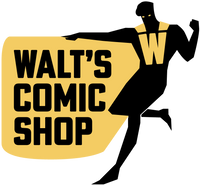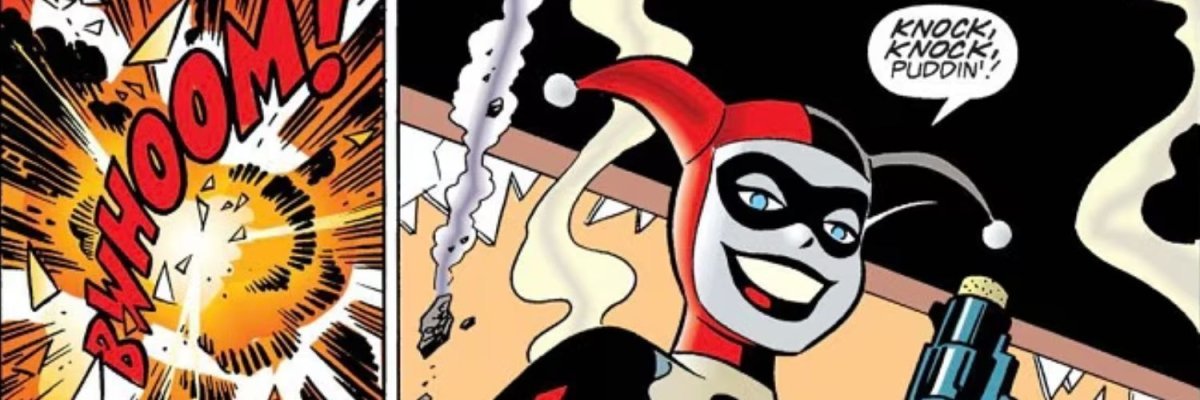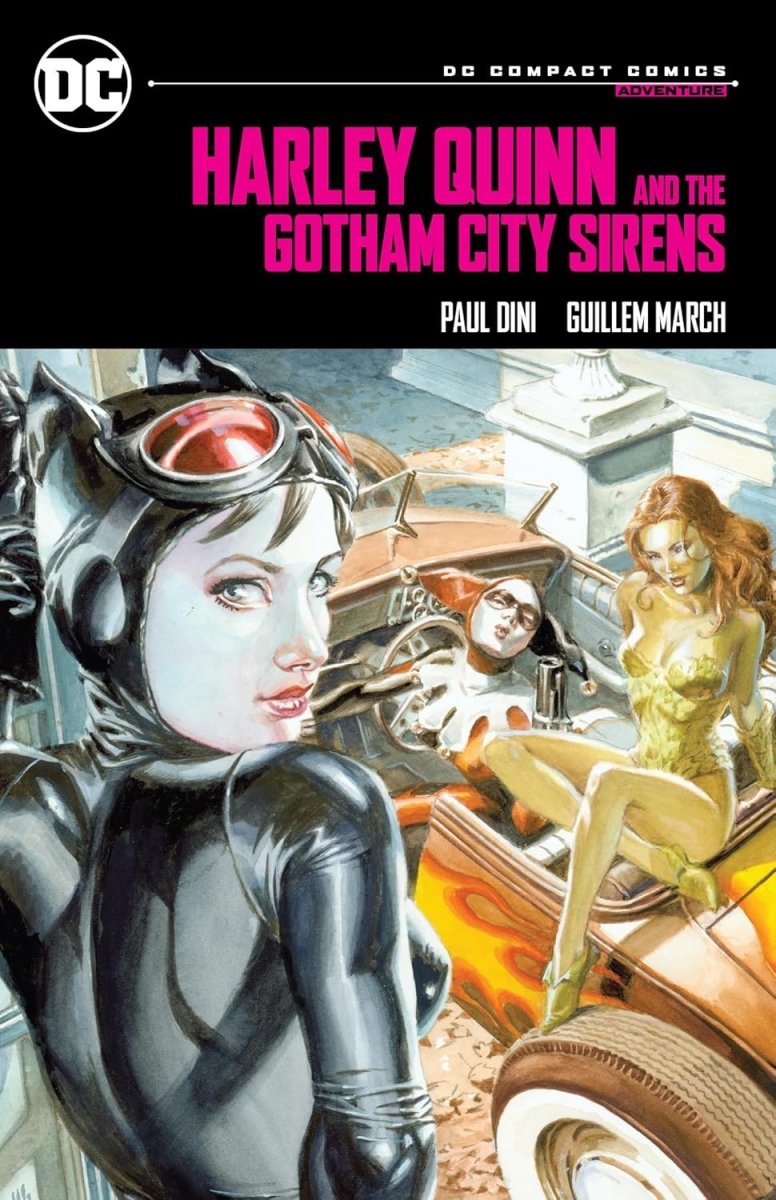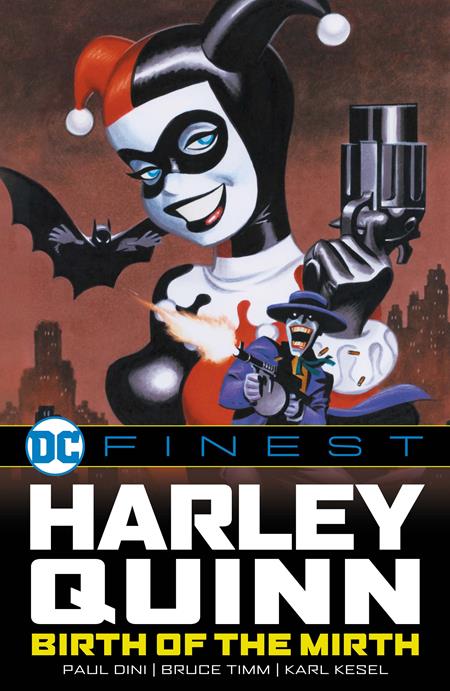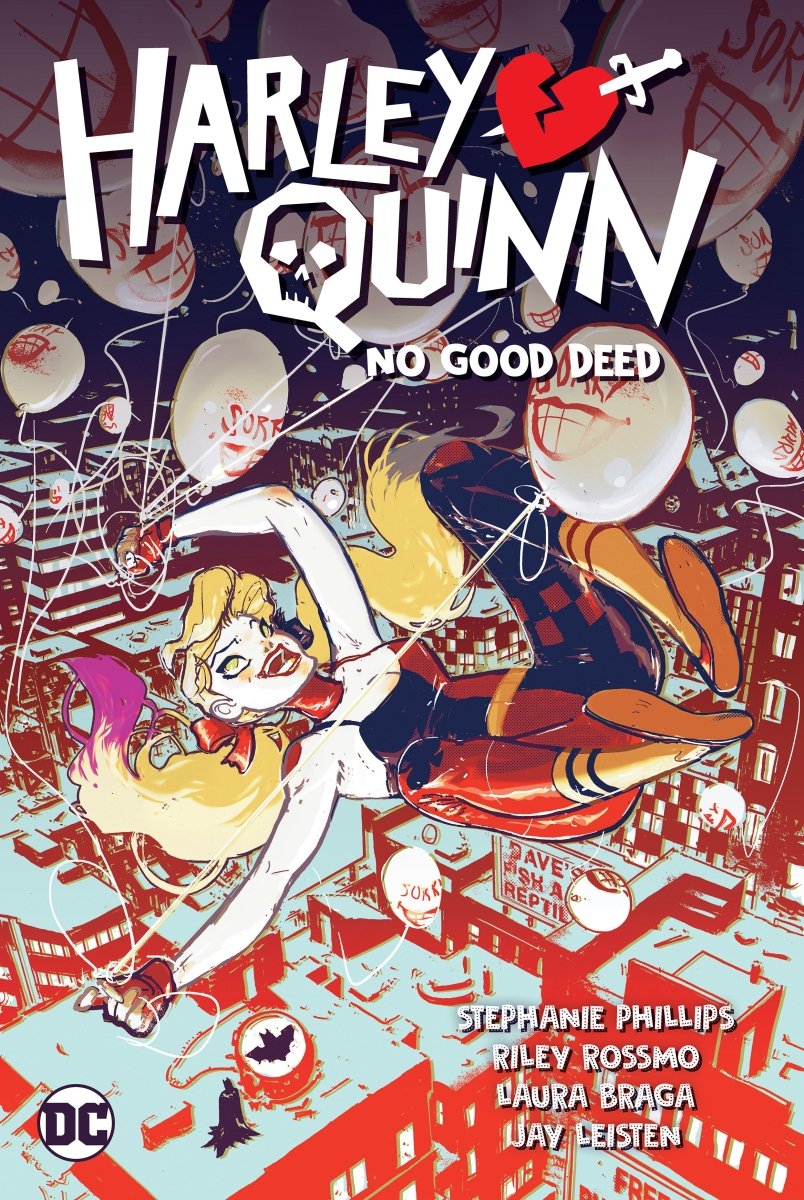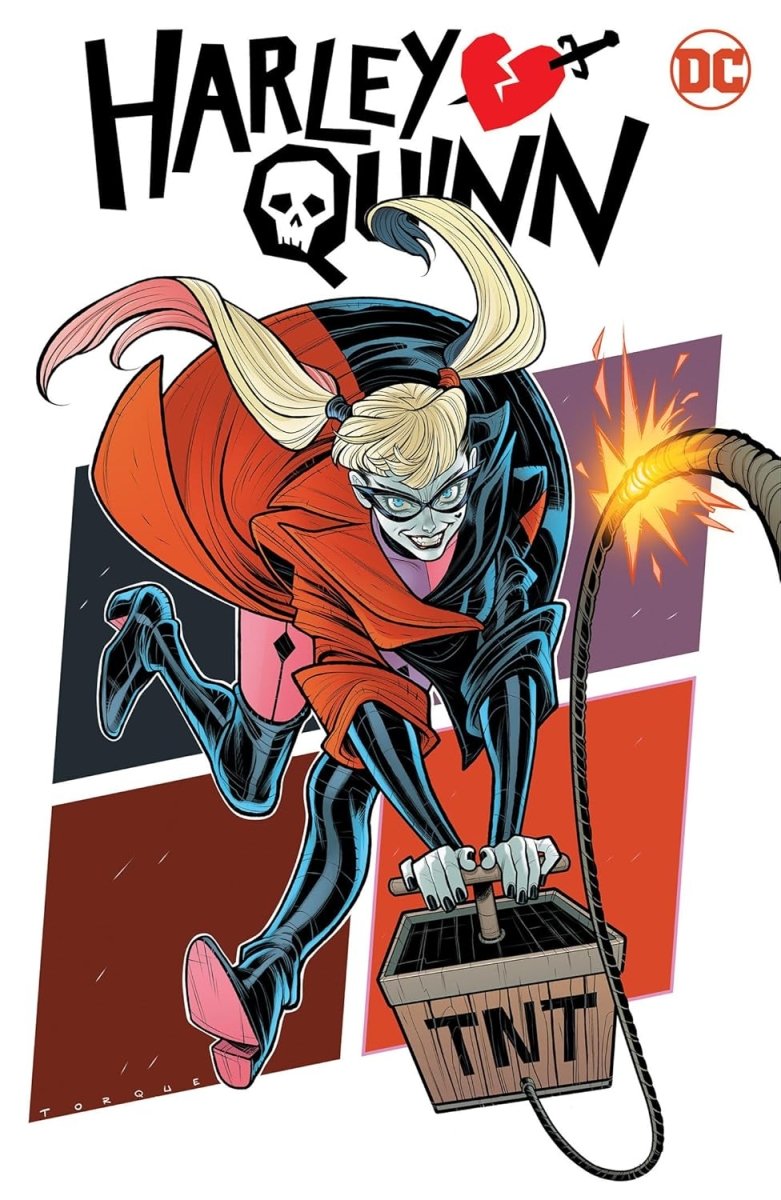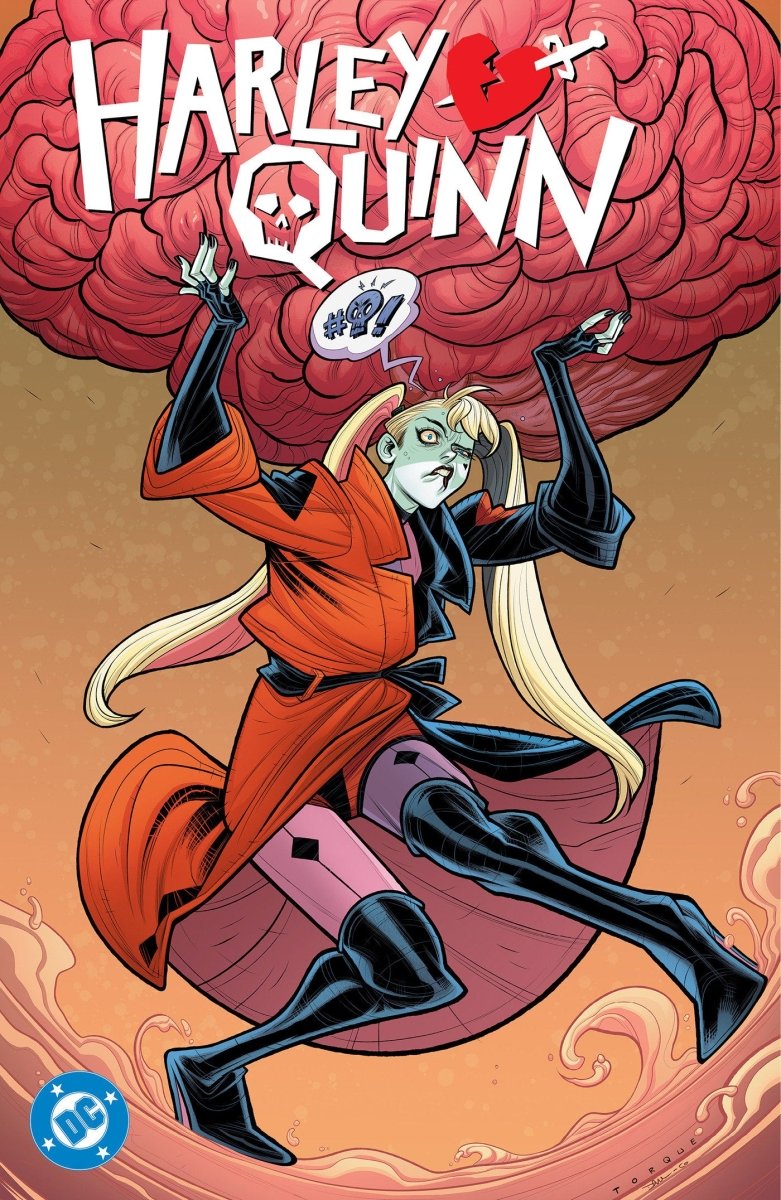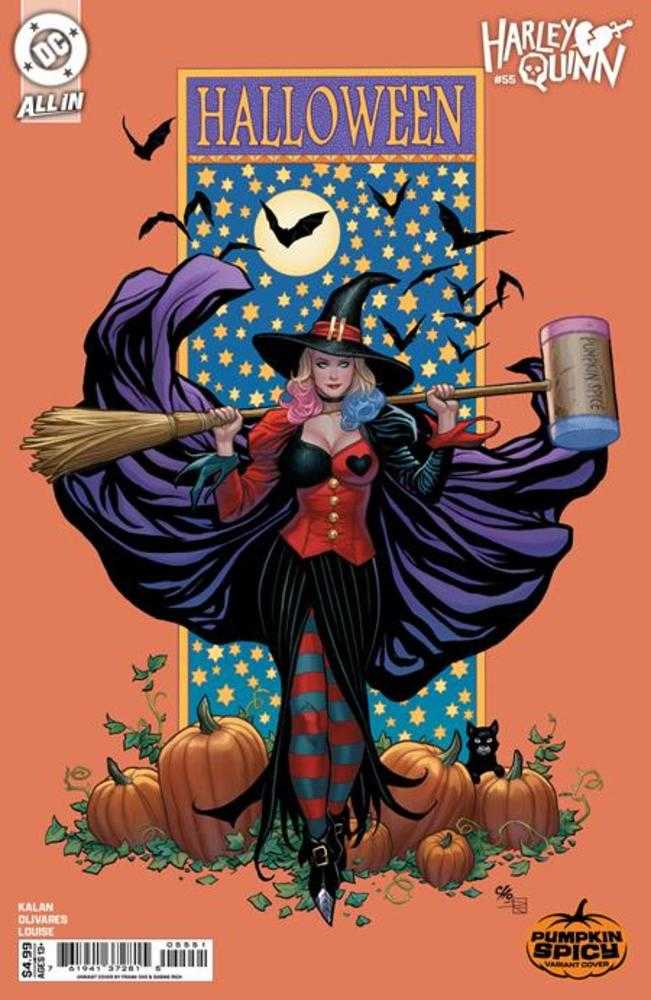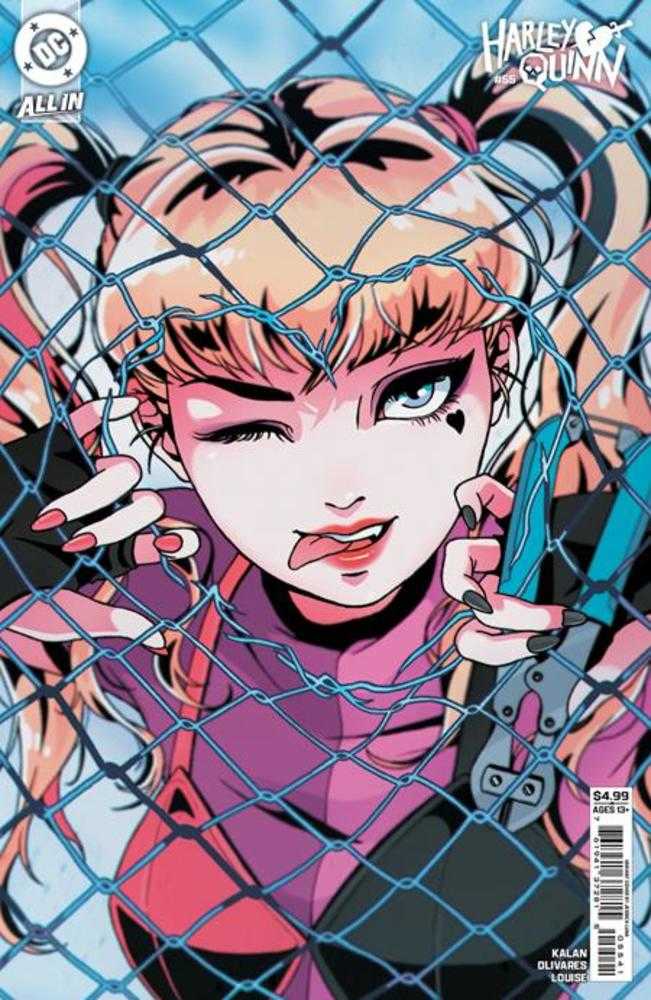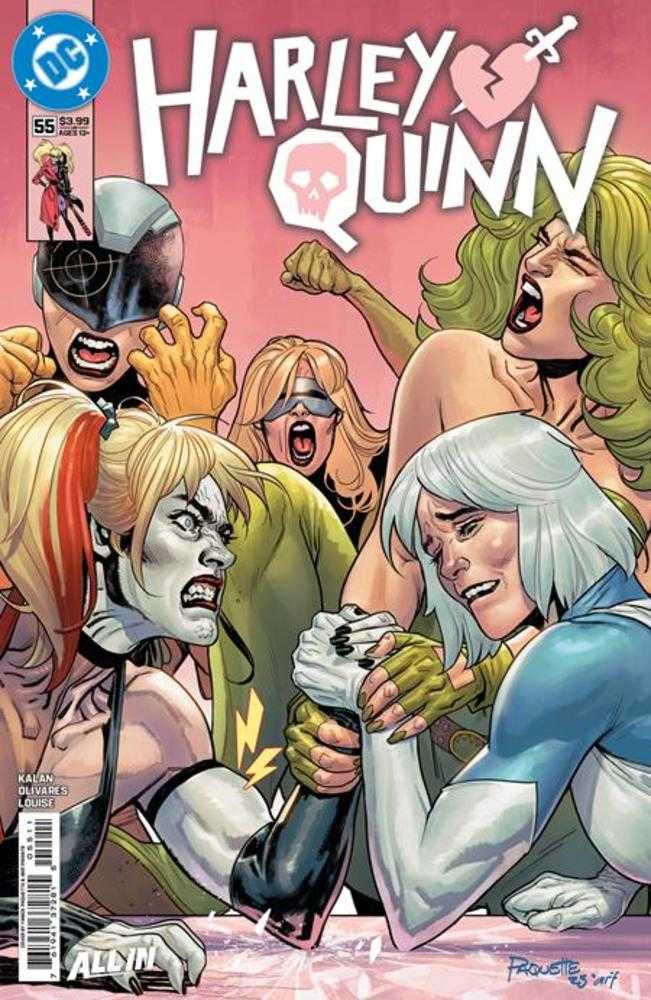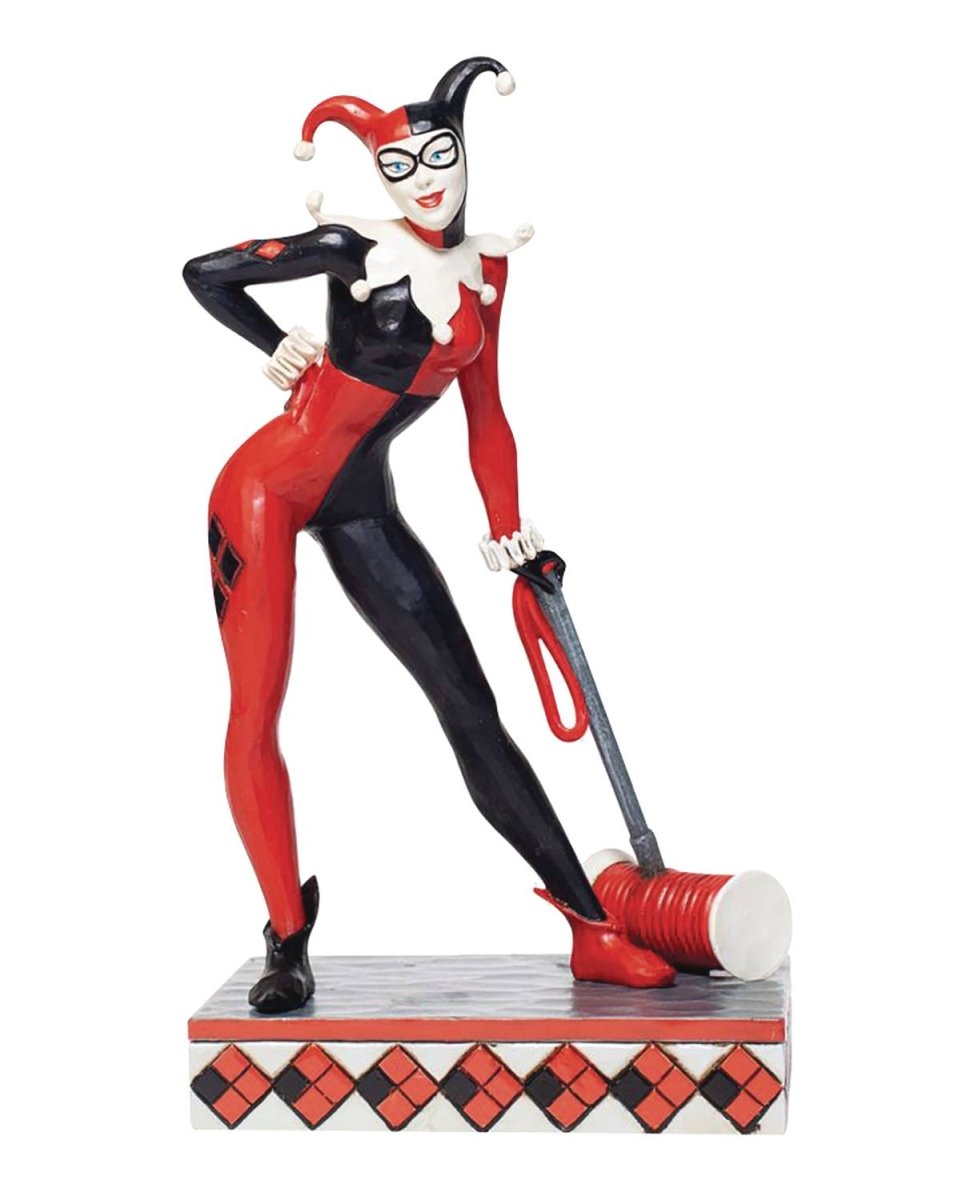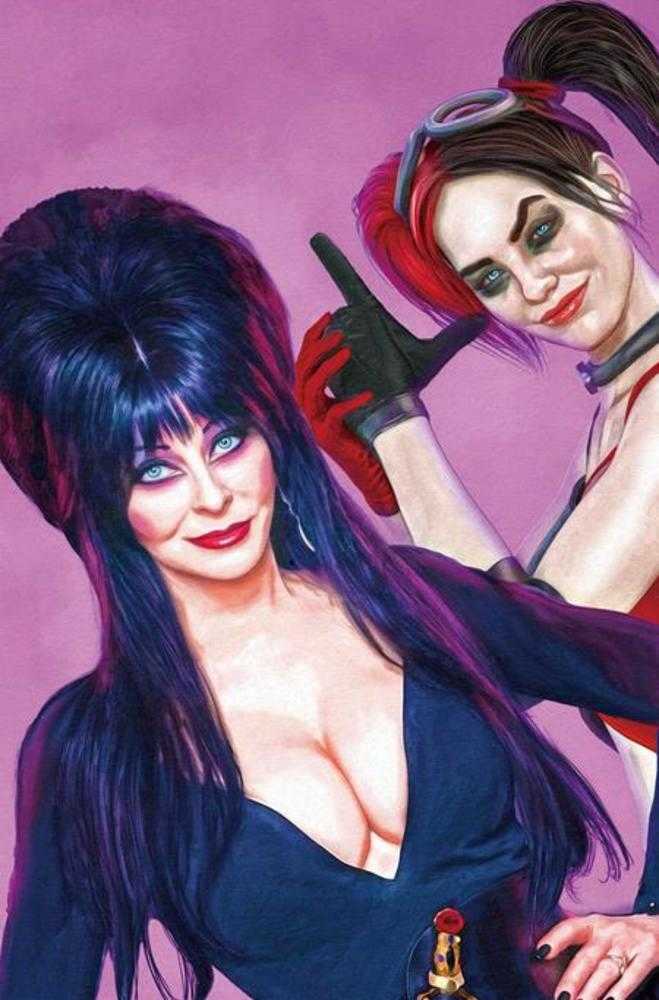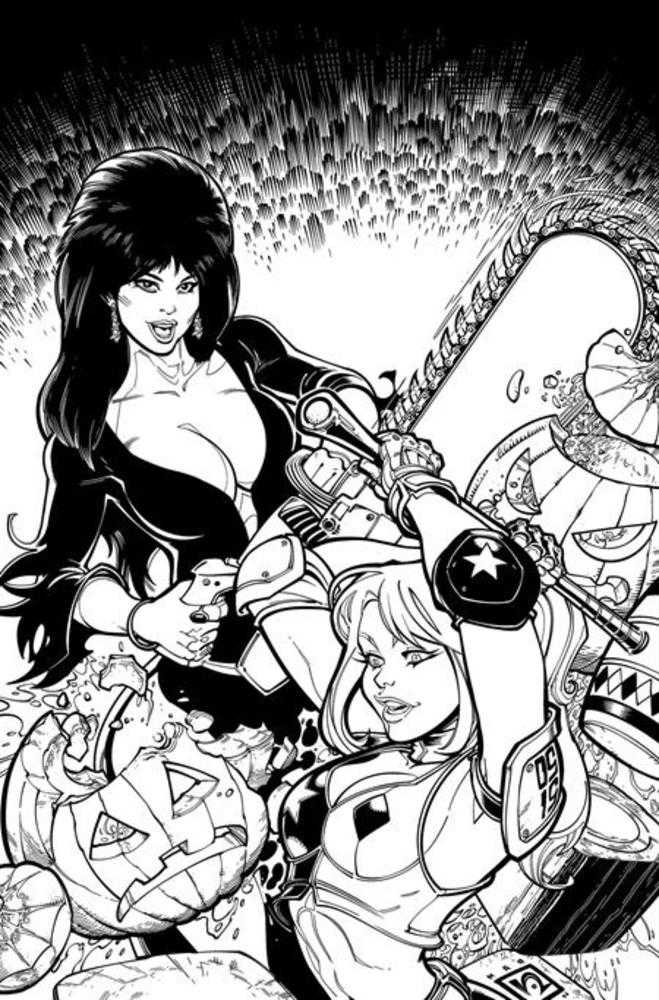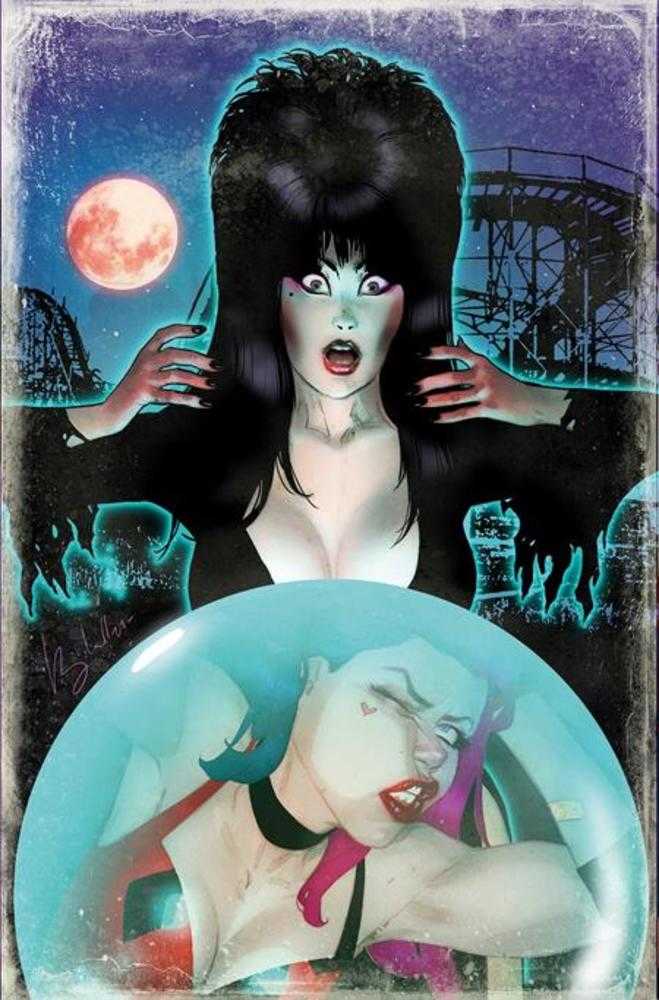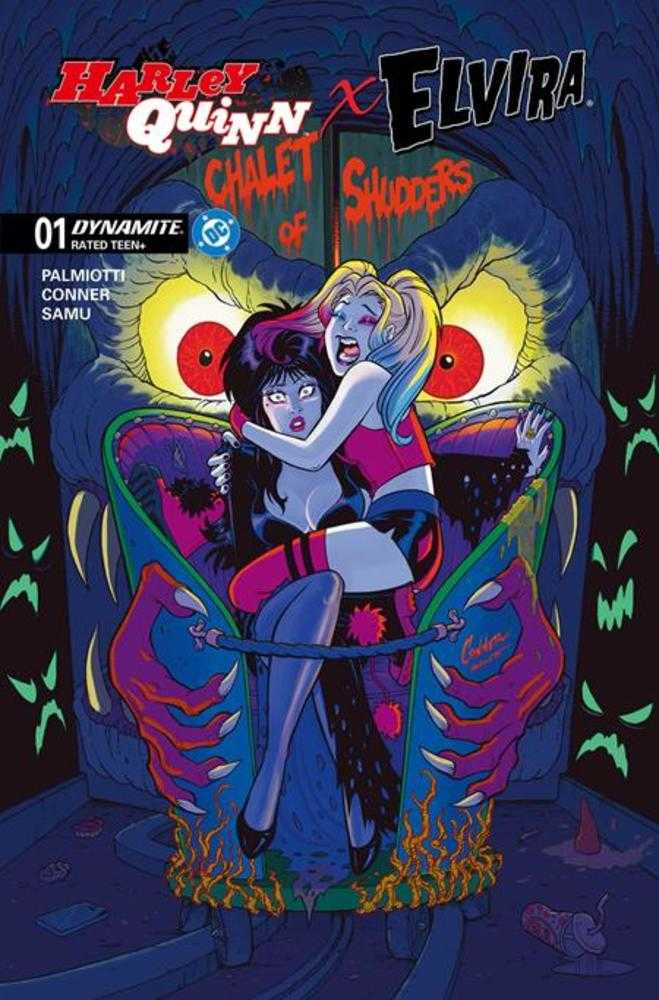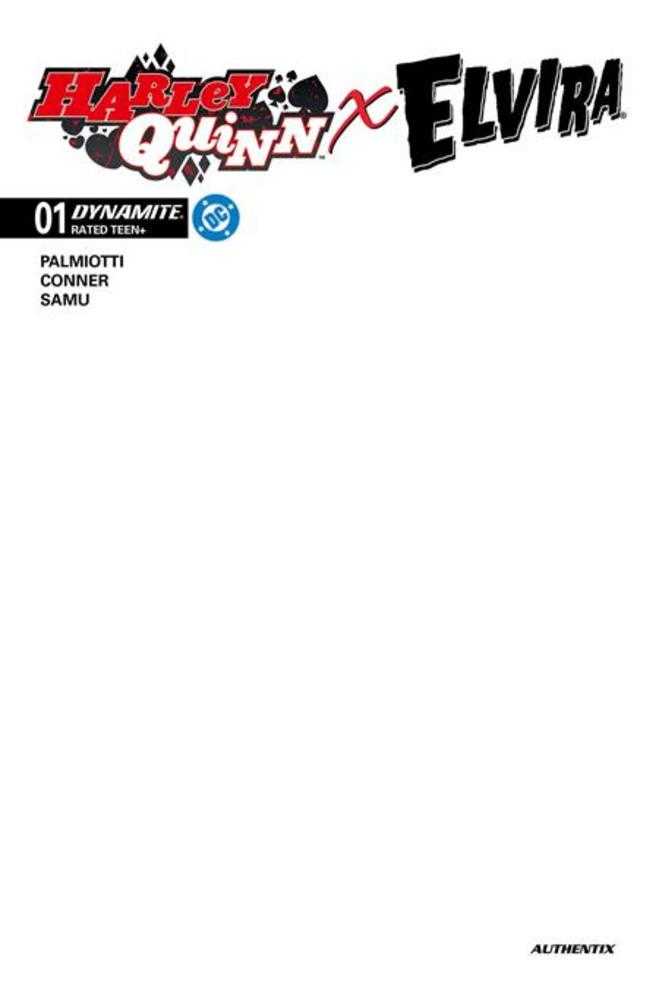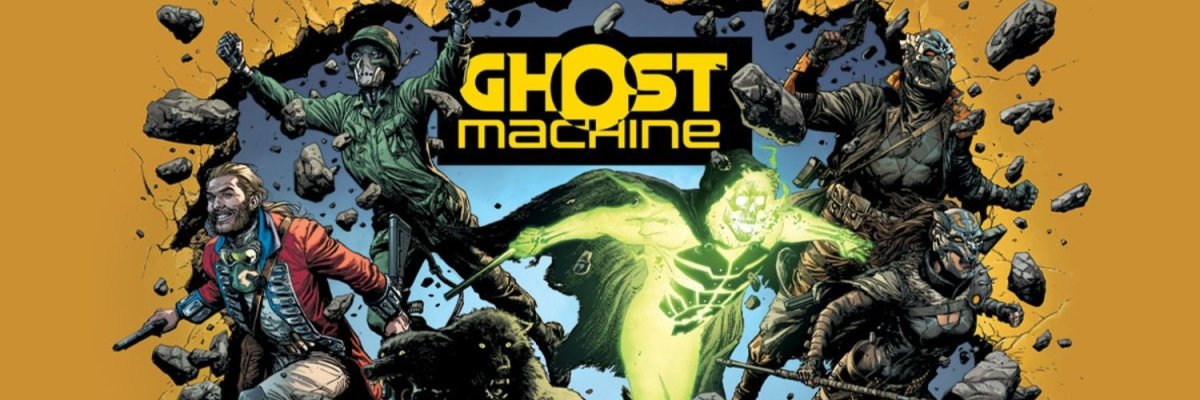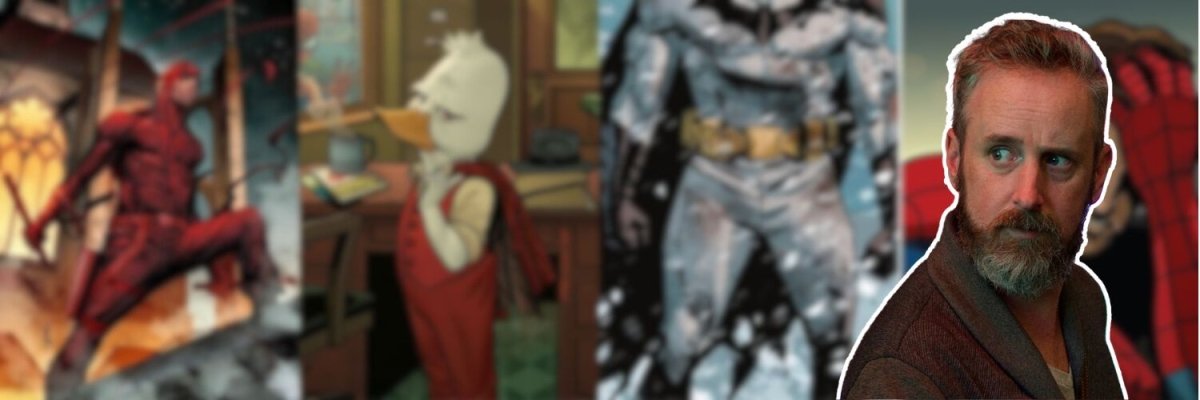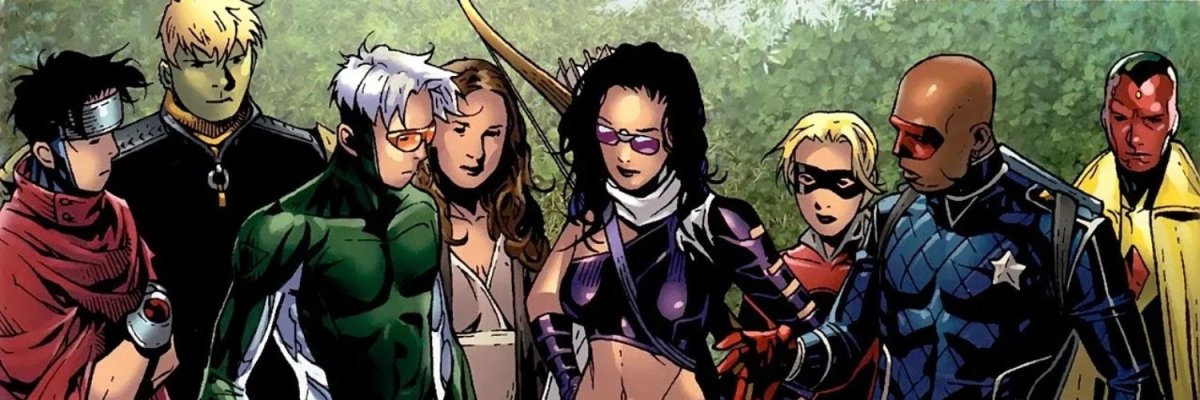
Written by Matheus
Filmmaker by day, Wishlistmaker by night. Kamala Khan’s unofficial PR team since 2014.
Well, puddins... strap in and get those comically large hammers out, because we’re talking Harley Quinn.
Once every full moon, a character comes along and becomes a phenomenon. And once in even fewer full moons (is that a thing?), a character shows up and turns into a meteoric pop culture trailblazer bomb – like Harley Quinn did. If the 2010s were the decade of comic book-inspired frenzy, this has to be the number one name that stole a bit of that spark and caught fire on its own.
We had more Harley Quinn-led movies in the last decade than Batman (didn't specifically count, but I'm sticking with this argument so don't ruin it!!!). She hasn't matched Bruce in the number of magazine titles yet, but she's definitely up there.
She's the Joker’s girlfriend – except that’s really not all she is. She’s a counterpart to chaos. If the Joker is a plunge into the evil madness that surrounds us, Harley always feels like a liberation of the good madness we all have in us – full of confetti, unicorns, and sugar-induced comas.
Harley is also a character I didn’t really love. Much like with Deadpool (the Marvel side of the same coin), I avoided her comics like any sane person in the DC Universe should avoid Gotham. I didn’t really click with Margot Robbie’s performance, and for someone who loves self-referential stuff, I always rolled my eyes up to the skies whenever any panel from her comics came my way.
And when I was tasked with recommending Harley comics to you, I thought I was in for a nightmare. But to my stupid-face surprise, I kinda... loved what I read.
So I invite you to my Harley guide, made by someone who turned from hater to fan in a span of time my boyfriend would call “not healthy.” Well, Mr. J – you can't stop me! Here we gooooo.
Harley Quinn - The Origins

Well, it makes sense that Harley is a multimedia sensation, because she was literally born in another medium first. We all remember Batman: The Animated Series from the ’90s – and if you don’t, well, I guess you were either raised by parents who didn’t let you spend your whole weekend watching TV like mine (thanks, Mom!) or you’re too young, in which case I resent your youthfulness.
Coming off the heels of Tim Burton’s Batman (1989), the animated series carried the gothic torch into Saturday mornings and redefined what superhero cartoons could be. It was stylish as hell, smart, and moody – all under the vision of animation legend Bruce Timm and the storytelling brains of Paul Dini.
And that’s where Harley Quinn was born. Meant to be a one-off henchwoman – a kind of mobster moll in jester tights – Harley was voiced by Arleen Sorkin, whose performance was so electric that Dini based the whole character on her. Harleen Quinzel, as she’d later be officially known in canon, started off as Joker’s loyal sidekick/girlfriend/punching bag.
But fans loved her. So much so that within a few years, DC had to bring her into the actual comics. She made her comic book debut in The Batman Adventures #12 (1993), but it wasn’t until Batman: Harley Quinn #1 (1999) – written by Dini and drawn by Yvel Guichet – that she was formally cemented into the main DC continuity.
Here’s how to read her first stories:
Harley Quinn - THE ABSOLUTE ESSENTIALS
Mad Love by Paul Dini and Bruce Timm

I’d heard this was a classic, but honestly? I never bothered reading it until now. And let me tell you – what a blast. It seems bonkers that it never clicked for me before, but of course Harley by Dini and Timm is a Looney Tunes. And when that finally settled in my brain, it was like a whole new world opened up.
She’s the best kind of Looney Tunes, too – the kind who knows exactly how ridiculous she is but refuses to escape it. Because why would she? It’s fun. It’s chaotic. It’s freeing.
I remember RuPaul (yes, the famous drag queen) once talking about how Bugs Bunny was a reality-shifter for him as a kid – how Bugs could twist the madness of life into something that made sense by making it even more absurd. I might be misquoting, or maybe hallucinating the quote entirely – but honestly, that only makes it more perfect for this point.
Because that’s Harley. That’s what she is.
She’s that wild character who bursts into frame and immediately reminds you: “Hey, this is a cartoon. Nothing here has to make sense.” And in doing so, she ends up being the one who makes the most sense. Because goddamn it, this is a cartoon. Gotham, the Joker, Batman – they’re all dark and broody, but Harley is the reminder that it’s all just stage lights, face paint, and melodrama. And she revels in that.
I always assumed the Joker obsession would make me roll my eyes straight into the astral plane. I figured any hint of Harley’s freedom from him wouldn’t come until way later. And yeah, to an extent, that’s still true. But I was genuinely surprised by how much of that inner tension – the longing for love clashing with self-awareness – is already baked into Mad Love and her earliest stories. There’s irony in her “mad love,” but it’s not cold or cynical. It’s layered, it’s meta, it’s heartbreakingly funny. It’s that same RuPaul/Bugs Bunny energy – twist the chaos until it feels like truth.
And by capturing that feeling – something deceptively simple but damn hard to nail – and stretching it across the Gotham pool of characters, Dini doesn’t just write a great Harley Quinn story. He writes one of the best DC stories ever. Full stop. You can read it in the Batman: Mad Love And Other Stories TP.
That story and her origins are also collected in the newly launched line DC Finest: Harley Quinn: Birth Of The Mirth TP. Also available here is the beginning of Harley’s first solo in-continuity run by Karl Kesel and Terry Dodson, and I’m happy to report that those comics are equally a blast. They explore Harley trying – not always successfully – to get away from the Joker, and her friendship (much later turned romance) with Poison Ivy.
There's also the Harley Quinn A Celebration Of 25 Years.

If you enjoy Dini and Timm’s vision of Gotham, there’s also, of course, the Batman by Paul Dini Omnibus and the TV series companions in he Batman Adventures Omnibus and Batman and Robin Adventures Omnibus.
Paul Dini also continues to write Harley in Harley Loves Joker and in the Harley and Ivy minisseries – this one I simply love with all my heart. Issue #3 is a movie business parody that had me laughing out loud like a crazy person at 3 in the morning. It’s available in both trade paperback and hardcover.
Ty Templeton (Batman and Robin Adventures) and Rick Burchett (Batman Adventures) later revisited the cartoon universe with the very fun miniseries Batman And Harley Quinn.
POST NEW-52 RUNS
By the time the New 52 reboot rolls in (2011, for those of you keeping score), Harley is already fully at home in the DC Universe – fan-favorite status locked and loaded. And with this new timeline shuffle, she hits the ground running… and basically never stops. So here’s a quick rundown of the major runs, the styles they embraced, and the little moments that made me (a certified lil hater) finally shut up and pay attention.
Amanda Conner & Jimmy Palmiotti

This is where the modern version of Harley truly takes form as the chaotic antihero – a Deadpool-adjacent, self-aware queen of fourth-wall breaks and emotional whiplash. Palmiotti and Conner, a real-life couple, basically adopt Harley as their baby for the better part of a decade. They shape her voice, her vibe, her world, and never really let go. They serve up a cocktail of slapstick violence, rom-com, and meta-comedy. Harley talks to the readers, complains about her writers, and gets into absurd misadventures. It’s a series that leans hard into the idea of Harley as chaos incarnate – but with a heart that keeps you grounded.
Issue #0 is a perfect example. It’s completely bonkers – Harley jumps between art styles, argues with different versions of herself, auditions artists for her own comic, and generally turns the format of a comic book into her personal playground. It's obnoxious, funny, and completely unnecessary – which makes it very Harley. And I kinda loved it. It’s also in this era that Harley begins fully stepping away from the Joker’s shadow. She starts forming her own identity, gets new love interests (hi Ivy), and becomes a leading force in her own right.

Collected in three giant omnibuses (cry, Doctor Fate). They're out of print (sorry, Doctor Fate), so let’s bother DC until they’re back. In the meantime, the first part of the run is available in the Harley Quinn: Wild At Heart DC Compacts Edition.
Heroes in Crisis by Tom King & Harley Quinn and Poison Ivy by Jody Houser

Okay. Let’s talk about Heroes in Crisis. Or, as I call it: “Like Wally West hasn't suffered enough.” This was DC trying to say something big and important about trauma, therapy, and the emotional toll of being a superhero. And of course, a therapist-turned-clown is one of the characters in it.
This series, by Tom King with art by Clay Mann, is beautifully drawn, often well-intentioned, but also… confusing. Harley is positioned as one of the main characters, which is cool – but she’s also written as a sort of half-detective, half-loose cannon. The story is about a series of murders at a secret mental health retreat cabin/clinic where superheroes go when the stuff they're dealing with gets too overwhelming. And if you were expecting something character-driven and consistent, well… this ain’t it, puddin’.
That said, there are moments here that show how far she’s come as a character. She’s treated less like comic relief and more like a wild card with stakes. That’s… progress? Kinda?
It’s not beloved, but in the same vein as other big dives into heroes dealing with mental health issues – like Identity Crisis – Heroes in Crisis can be a good creative exercise.
But if Heroes in Crisis is the weird, overly serious family dinner Harley was dragged to, then Jody Houser’s Harley Quinn and Poison Ivy (2019)) is her well-deserved girls’ trip after the mess.

This six-issue mini picks up right after Heroes in Crisis and focuses on fixing Poison Ivy, giving these two the spotlight, and letting them be chaotic together. And honestly? I was into it. It’s like DC Comics’ Thelma and Louise for people like me who wanted even more kisses on the way to the canyon. Houser writes their dynamic with genuine affection. Ivy is still rebuilding herself (literally – she’s regrowing like a plant), and Harley is trying to be supportive while also being… well, Harley. What’s great here is how much Houser gets Harley’s heart. She’s annoying, yes. Over-the-top, definitely. But she’s also deeply loyal. Her arc here is about being there for Ivy. And maybe (just maybe) as something more. The art by Adriana Melo is vibrant, a bit chaotic (on-brand), and full of lush greens and pinks. Every page feels like a sticker set waiting to happen.
This mini isn’t game-changing. But it’s sincere, it’s sweet, and it doesn’t try to reinvent the wheel – just lets Harley and Ivy ride it into the sunset for a bit.
Batman by James Tynion IV & Harley Quinn by Stephanie Phillips

James Tynion IV’s Batman run is, weirdly, one of the best things to happen to Harley in a while. Post-Joker War, Gotham is a mess (what else is new). Enter Harley – trying, actually trying, to help.
Tynion’s Harley is raw and rebuilding. She’s not totally stable, not totally accepted, and absolutely not pretending to be squeaky-clean. But she’s genuinely done with the Joker. She’s seen the damage, been part of it, and wants to make amends. Her dynamic with Batman and the rest of the characters here is great, and I loved seeing her finally feel integrated into the Bat-family.
And then Tynion introduces a new Joker-girlfriend in Punchline. The parallels, differences, and mirror imagery with Harley create a fresh dynamic in the Harley/Joker conundrum.

And that’s exactly where Stephanie Phillips picks things up in her solo Harley Quinn run. This series fully commits to the idea that Harley is trying to fix it. And of course, her way of fixing things involves therapy metaphors, glitter bombs, and lots of people telling her to leave them alone.
Phillips’ Harley is trying to walk the hero path. She's working with the Bat-Family and throwing herself into the eternal clean-up game. She’s not pretending to be anyone she’s not – she’s just being the version of herself that finally cares.
The run also plays with Harley’s identity crisis in fun ways. Is she a villain trying to be good? A hero faking it? A whole new thing altogether? She’s not sure, but that tension is the story.
- Harley Quinn Vol. 1: No Good Deed Trade Paperback and Hardcover
- Harley Quinn Vol. 2: Keepsake Trade Paperback and Hardcover
- Harley Quinn Vol. 3: Verdict Trade Paperback and Hardcover
- Harley Quinn Vol. 4: Task Force XX Hardcover
- Harley Quinn Vol. 5: Who Killed Harley Quinn? Hardcover
Tini Howard in the “Dawn of DC” Era

Being honest, I was enjoying the research, but having yet another run starting from volume 01 hit me like bricks. Where else can they take this character that defining authors like Dini, Conner, and Phillips didn’t already explore? Apparently: the damn multiverse. And you know this guy loved that stuff.
Her first arc starts with the idea that when Quinn interacts with objects like cartoon hammers and weirdly cutesy dead fish, she’s actually accessing the multiverse.
And here’s where I had my little “oh shit” moment: this brought me all the way back to my original theory. The Bugs Bunny thing. That Harley Quinn is, at her core, the Looney Tune inside the DC Universe – aware of the cartoon-ness of it all in a way that bends reality. And here? That awareness is literal.
So thank you, Tini, for bringing the article full circle. Also: it’s just fun. The art is elastic, and I’ve always felt that Howard’s comics are so self-assured. Even when I don’t fully vibe with them, it feels good to see creators so determined in their vision. And I think this pulls off the Deadpool scheme waaay better.
- Harley Quinn (2023) TP Vol 01 Girl In A Crisis (c’mon this title is so clever)
- Harley Quinn (2023) TP Vol 02 Eye Don't Like Me
- Harley Quinn (2023) TP Vol 03 Clown About Town
Elliot Kalan and the “DC All-In” Era

Coming off a long stretch of Harley being more of a Deadpool-adjacent loudmouth mascot than a three-dimensional chaos clown, Kalan’s run, starting in Harley Quinn #44, feels like a resurrection of the Paul Dini Harley – the one who’s funny, sure, but also clever, emotional, unpredictable, and a little bit tragic. But this isn’t nostalgia for nostalgia’s sake. This is destructive comics (Kalan, I love this pun so much that I might haunt you in your sleep for thinking of it before me).
The metaphor isn’t subtle, but it’s funny. It’s Harley Quinn vs. gentrification – both of Gotham and the construction of her own myth. Kalan reminds us that Harley is the chaotic clown we all love. A chaotic crime-clown.
It’s obviously too soon to know if those goals will be reached, but I love the throwback here.
The first trade paperback releases in July.
Harley Quinn - THE TEAMS
Before Harley was headlining her own multiverse-breaking, chaos-ridden solo titles, she had to get out of the Joker's shadow. And DC, for all its mistakes, did her a solid by giving her the keys to two different ensembles that helped define her post-Joker identity.
First up:
Gotham City Sirens

Think of this one as Harley’s first real group therapy session – but with a heavy dose of flirting with your best friends (as all therapy should have, of course). The series, written by Paul Dini (again, the guy gets her), teamed Harley up with Poison Ivy and Catwoman. Three iconic women. The amount of toxic exes between them could rival me in that third year of high school when I figured out I liked boys. And let me tell you, that’s hard to do.
This book is special because it lets Harley be a person. It’s a punch-book, but there’s actual introspection here, and Dini is very good at doing both. The Harley/Ivy dynamic also officially plants the seeds (heh) of the romantic relationship that would bloom later on, making this one a queer cornerstone of her canon.
It says a lot about how Harley has changed from that period to now that this book was originally titled Gotham City Sirens, and now the official reprint material adds a “Harley Quinn and” to the beginning. But if you want to experience Harley without feeling overwhelmed by Harley (something the next book is famous for), this is your book.
You can jump into the Harley Quinn & The Gotham City Sirens Omnibus (2022 Edition) HC or have a sip with the Harley Quinn And The Gotham City Sirens TP (DC Compact Comics Edition)
New 52 Suicide Squad

Aka “the Harley with hot pants and half her personality shaved off” era. Look, this run gets flack – deservedly so – for trying way too hard to make Harley edgy and marketable. Her redesigned look leaned heavily into the Arkham video game aesthetic: less jester clown, more Hot Topic Harley, like the one painted on the wall of the bar downstairs from my apartment (yes, there’s a Nolan-Joker there too, and yes, it doesn’t make any sense, and yes, I would never enter that place and pray every night that it closes soon).
But here's the thing. Even if the vibe is early-2010s try-hard, this is where Harley starts leveling up into an A-lister. Suicide Squad repositions her from a sidekick or side character to an unpredictable antihero. She's still haunted by the Joker, but she’s also starting to fight back. And somewhere in the middle of all that violence, there's a glimmer of the Harley we know today – funny and furious. If you loved the first Suicide Squad movie (very brave of you, but I won't judge), this is your book.
And I loooove the paneling and art in this book. It's very underrated. And for all its writing fails, most of the characters' setups are good. And one more AND for you!!! Aaaaand I'm particularly fascinated with the early New 52 books as someone who wasn't there when it was made. I can't imagine how you go from Ostrander to this – but it's fascinating for sure.
